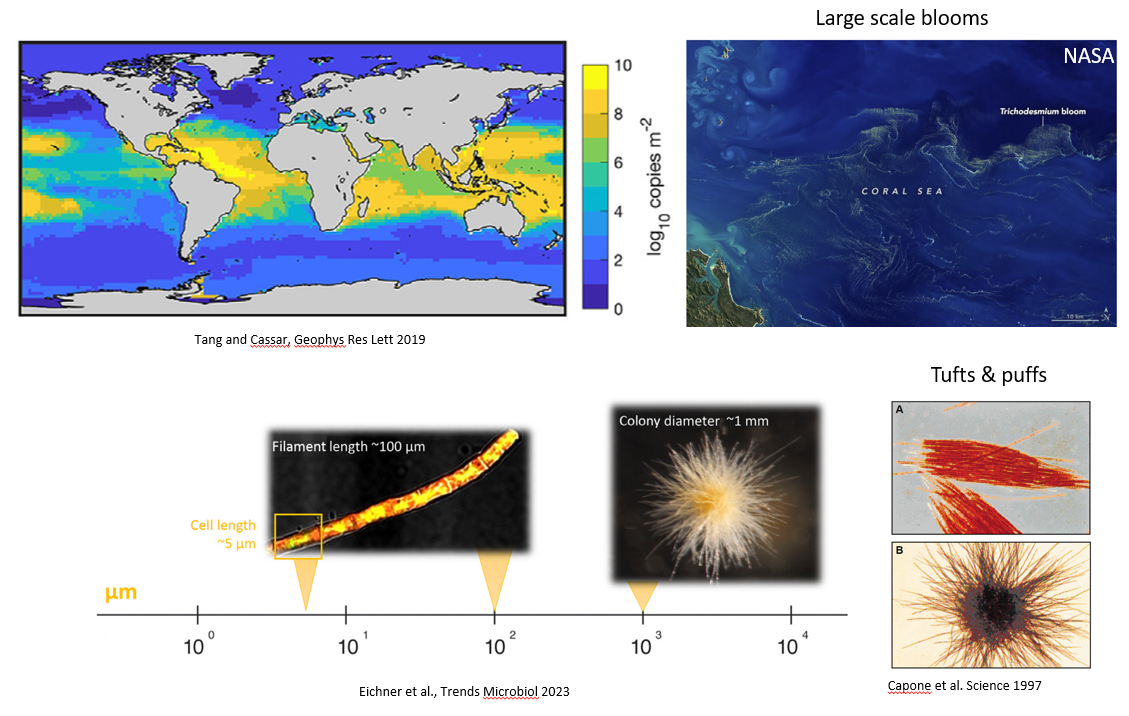Keywords
Cyanobacteria, microbial ecology, colony formation in flow, experiments
Description
Many of the global-scale contributions of the oceans to biogeochemical cycles are controlled by the microscale behaviours and interactions of microorganisms. To understand the environmental controls on elemental cycling and assessing the impact of future climate change, we must understand what governs these microscale interactions. A key role is played by Trichodesmium, a globally distributed filamentous marine cyanobacterium, which can perform nitrogen fixation to fertilize and thus sustain life in nutrient-poor regions of the oceans. Occasionally, it can form large-scale surface blooms spanning tens of thousands of square kilometers. Crucial to its success in colonizing global oceans is its ability to live either as individual filaments or as aggregates of filaments. This dual lifestyle enables Trichodesmium to adapt to changing environments, but it remains unclear what environmental factors control the size of aggregates.
Skills you will learn
During the project, the student will learn how to culture Trichodesmium, use a rheometer as a precise mixing device that mimics ocean turbulence, and perform image analysis (in (MATLAB or Phyton)) to extract aggregate size spectra.
Goal
Aggregates form when turbulence and buoyancy bring individual filaments together by encounters, but turbulence may also break aggregates apart. In this project, the student will perform experiments to study how encounters and fragmentation in turbulence control the size of emerging aggregates. The goal is to expose Trichodesmium cultures to controlled mixing levels and observe, through microscopic imaging, how mixing impacts aggregation.
Project start
Anytime
Location
Environmental Microfluidics Laboratory, IfU, D-BAUG (ETH Zurich, Hoenggerberg campus)
Project type
This project can be adapted for Master Thesis or Master Project.
Contact details
The thesis will be supervised by Dr. Jonasz Słomka and Prof. Roman Stocker and will be carried out at the Institute of Environmental Engineering.
For more information, please contact Dr. Jonasz Słomka (slomka@ifu.baug.ethz.ch).
